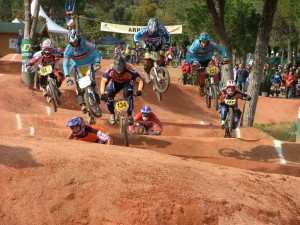 What are the Basic Parts of a BMX Bike?
What are the Basic Parts of a BMX Bike?
Owning a brand-new BMX bike evokes feelings similar to driving a car for the first time – you’re excited, nervous and, at the same time, a little anxious that you don’t know everything that needs to be known about your new vehicle.
Yes, your BMX bike is technically a vehicle (even though that term evokes weird images of cars and trucks), and you have to know its most vital parts if you want to be able to maintain it properly (just like a car). Below is a list of BMX bike parts, along with their functions. Read the list, commit the details to memory, and begint riding with confidence!
1. Headgear and handlebars – Your BMX bike’s steering mechanism would not be complete if it has no headgear. “Headgear” is the collective term that refers to the different levers that control the gears and braking system of a bike.
BMX bikes don’t have gears, for obvious reasons, and because of this, the chain drive is much easier and simpler to take apart compared to the chain drive of a mountain bike with multiple gears.
Our only suggestion when you are modifying the bars is to choose handlebars that are comfortable and sturdy. By comfortable, we truly do mean comfy – the rise and shape of the bars should complement your body’s common position when riding, as well as your favorite “grip position.”
Taking apart a bike is relatively easy if you have the tools, so don’t be afraid to change and customize your BMX to suit your needs.
|
Learn how to ride faster than you ever thought possible |
2. Gyro – The gyro mechanism on a BMX lets the rider to make full turns (especially in mid-air). A well-oiled gyro can definitely help a budding BMX enthusiast when he is training, so make sure you apply the right type of lubrication, depending on the general weather conditions in your location.
3. Freewheels – The freewheeling system is applied on BMX bikes simply because of the need for reverse pedalling. The chain drive on other bikes will just spin when a rider pedals on reverse. Reverse pedalling on a BMX bike, reverse pedalling will generate more or less the same number of wheel rotations, which will allow the rider to balance and move in the opposite direction.
4. Freewheel accessories – Reverse pedalling is often done when the rider needs to lift the bike vertically, or if he wants to display how he can balance while straddling the bike’s frame. If this is what you’re planning to do, you have to install platforms and other accessories to ensure that your feet will be able to lock onto the bike’s frame while you are performing a stunt.
5. Chain guards – If your chain is derailed while in the act of performing a stunt, you’re toast. That’s why bash guards, or chain guards, are commonplace in stock BMX setups. If your chain guards are worn out from repeated falls, it is time to consider replacing them.
6. Braking system – The most well-known brake variant for BMX bikes is the clamp type brake. It’s cheap, simple, and easy to maintain. You can even conduct re-planing if you don’t want to replace your brake clamps yet.
Filed under: Bikes